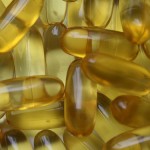Dosage Forms given Orally
- Liquid preparations- mixtures, suspensions, emulsions, linctuses, elixirs, syrups, tinctures, spirits, aromatic water
- Solid preparations
Dosage Forms given Rectally
Suppositories, enemas
Dosage Forms given Parentally
Injections (ampoules, vials, infusions)
Dosage forms given through respiratory passages
Gases, vapors, steam inhalations, aerosols, sprays, nebulizers
Topically given (External application, skin, mucous membranes)
Creams, ointments, liniments, lotions, pastes, poultices, dusting powders, lozenges, eye, ear and nasal drops, mouth washes, glycerin, paints, gargles, solutions, vaginal douches, pessaries
Oral Route:
Mixtures:
It is a liquid preparation consisting of one or more drugs dissolved in aqueous vehicle, usually flavored, meant for internal administration. E.g. carminative mixture
Suspension:
Mixtures of insoluble or sparingly soluble drugs in water or other vehicle, in which particles of insoluble drugs are kept in suspended state, with the help of a suitable suspending agent. E.g. kaolin suspension, dijex suspension
Emulsions:
Mixtures containing two immiscible liquids made miscible with the help of emulsifying agents. E.g. castor oil emulsion.
Linctuses:
Thick viscous liquid preparations containing sucrose and medicines with demulcent, expectorant and sedative properties. They are used for cough. E.g. codeine linctuses
Elixirs:
Pleasantly flavored and sweetened liquid preparation containing high proportion of alcohol or glycerin or propylene glycol. E.g. paracetamol elixir
Syrups:
Concentrated aqueous solution of sucrose or other sugars to which medicines or flavoring agents may be added. E.g. codeine phosphate syrup
Tinctures:
Alcoholic or hydrochloric solutions containing comparatively low concentration of active principles of crude drugs. They are generally prepared by percolation or maceration. E.g. tincture cardamom compound.
Tablets:
Compact products containing medicines in compressed form, discoid in shape but may be round or long, cylindrical or triangular. E.g. aspirin tablet, co trimoxazole
 Photo by MyDigitalSLR
Photo by MyDigitalSLR
Capsules:
Capsules consist of a medicine enclosed in a shell. Shell is made of gelatin. This is convenient for medicines having unpleasant taste. Capsules are usually cylindrical. E.g. capsule amoxil.
Pills:
Spherical or ovoid masses containing one or more medicaments (medicines). They are smaller in size and contain smaller quantity of drug.
Powders:
Mixtures of two or more medicines in finely divided forms. Minimum weight is 120 mg. e.g. atropine powder, ORS.
Granules:
Preparations of medicines usually in the form of small irregular particles 2-4 mm in diameter. E.g. eno granules.
Rectal Route
Suppositories
Solid preparations meant for rectal route administration. E.g. glycerin suppository.
Enemas:
Aqueous, liquid, oily solutions or suspensions for rectal route. They are anti inflammatory, having anthelmintic, purgative and sedative effect. They are also used for x-ray examination of the large gut. E.g. pregnisolone
Parenteral Route:
Injections:
Sterile solutions intended for parenteral administration given for those drugs that cannot be given orally or are inactivated in the body. They produce rapid and prolonged effect. E.g. hydrocortisone injections.
Inhalation Route
Aerosol Inhalation:
Aerosol inhalation consists of solution of medicine in a mixture of inert propellants held under pressure in aerosol dispenser, consisting of metering valve. E.g. salbutamol aerosol inhalation
Inhalations:
Liquid preparations composed of volatile ingredients when vaporized are brought into contact with the lining of the respiratory tract. E.g. benzoic inhalation.
Sprays:
Preparations of medicines in aqueous, alcohol or glycerol containing media applied through nose or throat by atomizer. E.g. lignocaine spray.
Topical Route
Lotions:
Liquid preparations used for external application to skin but not rubbed into skin. Usually contain alcohol or glycerin. E.g. calamine lotion.
Creams:
Viscous emulsions of semisolid consistency. Creams may be of oil in water (aqueous creams) or water in oil (oily cream) type. E.g. betamethasone cream.
Ointments:
Liquid/semi liquid preparation meant for external use containing substances possessing analgesic, soothing or stimulating properties. E.g. sulphur ointments.
Liniments:
Liquid or semi liquid preparation meant for external application e.g. turpentine liniment.
Paste:
Semisolid preparation for external application consisting of medicine mixed with soft paraffin or liquid paraffin or with non greasy base made with glycerol, mucilage or soap. It has antiseptic properties, soothing effect and is protective. E.g. zinc, coal tar paste.
Poultices:
Thick pasty preparation used externally for reducing inflammation and pain. E.g. kaolin poultice.
Dusting powder:
Mixture of two or more substances in finely powdered form. It is applied externally but not on open wound. E.g. boric, zinc, starch, dusting powder.
Eye Drops:
Sterile solutions or suspensions for instillation into eyes. They contain substances with antiseptic, anesthetic, anti inflammatory, anti microbial, mydriatic or micotic properties. E.g. chloramphenicol eye drops, pilocarpine.
Eye Lotions:
Solutions for washing or bathing eye. E.g. sodium bicarbonate eye lotion.
Eye Ointment:
Semisolid soft preparation for application to conjunctival sac or lid margin.
Ear Drops:
Liquid preparations instilled into the ear. E.g. chloramphenicol.
Lozenges:
Solid dosage forms of medicines for slow dissolution in mouth. They consist of medicines mostly in flavored bases. E.g. strepsils.
Paints:
Liquid preparations meant for skin, mucous membranes containing volatile solvent which evaporates quickly to leave a dry film of medicine. They contain glycerin which prolongs their effect. E.g. gum paint, throat paint.
Gargles:
Aqueous solutions usually in concentrated form, used after diluted for prevention or treatment of throat infections. They are usually thrown out of mouth but aspirin gargles and saline gargles can be swallowed.
Mouth Washes:
Aqueous solutions in concentrated form with deodorant, antiseptic, local analgesic, astringent properties. They are thrown out of mouth after rinsing. E.g. Listerine mouth wash.
Pessaries:
Solid bodies for vaginal administration containing drugs for local actions. E.g. nystatin pessaries.
Want a clearer concept, also see
 howMed Know Yourself
howMed Know Yourself




